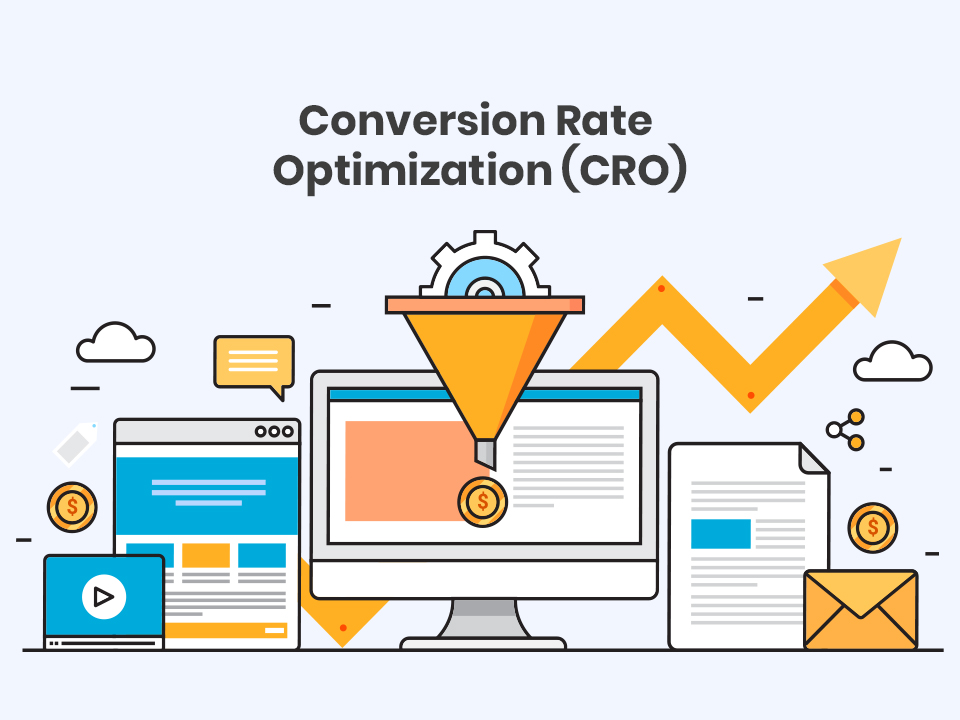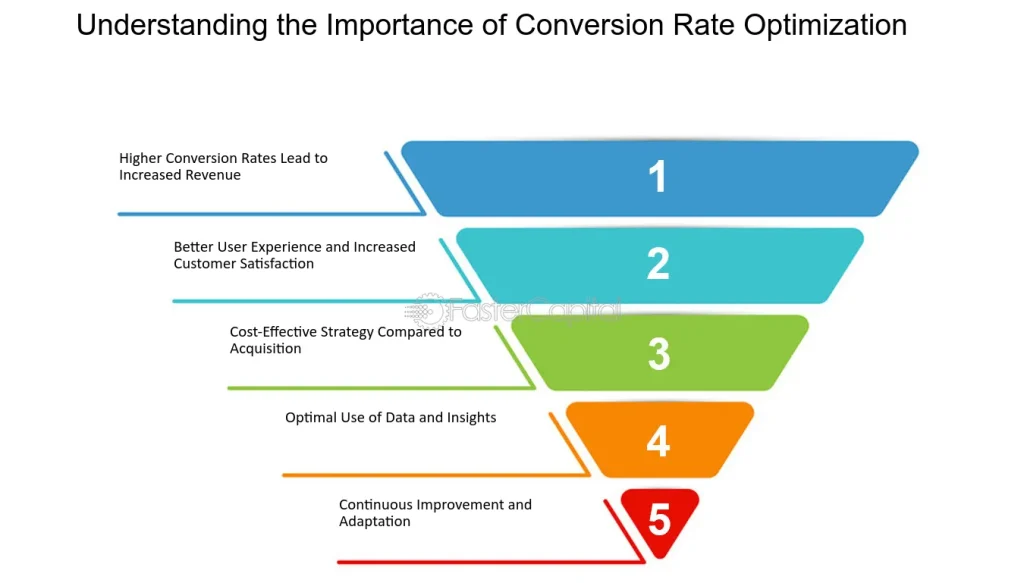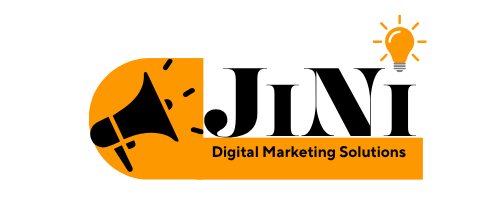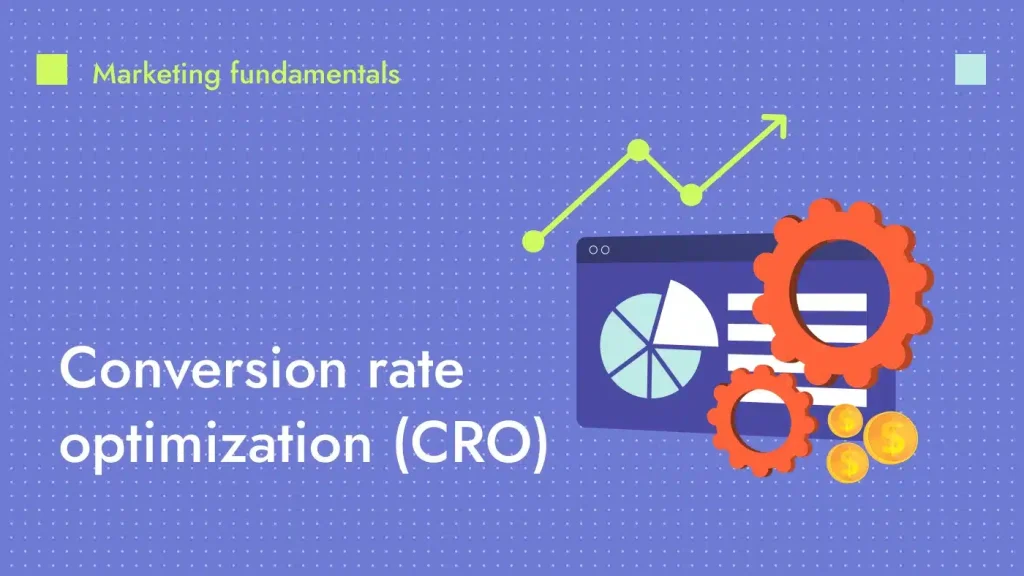Conversion Rate Optimization: Turning Visitors into Customers
1.Introduction: The power of CRO

Conversion Rate Optimization is the systematic process of increasing the percentage of website visitors who take a desired action. Whether you’re an e-commerce store, a SaaS platform, or a service provider, CRO helps turn your passive visitors into engaged, paying customers. In today’s digital landscape, driving traffic to your website is only half the battle. What really determines your business success is what happens after users land on your site. This is where Conversion Rate Optimization (CRO) comes into play.
What is Conversion ?
A conversion is any action you want a visitor to take on your site. It could be:
Making a purchase (macro-conversion)
Signing up for a newsletter (micro-conversion)
Downloading an eBook
Requesting a demo
Adding a product to cart
What is Conversion Rate ?
Conversion Rate = (Conversions / Total Visitors) x 100
If you had 10 conversions from 200 visitors, your conversion rate is 5%.
What is Conversion Rate Optimization ?
Conversion Rate Optimization (CRO) is the process of enhancing your website or landing page to increase the percentage of visitors who take a desired action rather than focusing solely on attracting more traffic, CRO helps businesses get more value from existing visitors by improving user experience, removing obstacles, and guiding users toward action.At its core, CRO relies on data analysis, user behavior insights, and A/B testing to identify what’s working and what’s not. By continuously testing and refining website elements like headlines, buttons, layout, and forms, businesses can turn more visitors into leads or customers—boosting revenue without increasing marketing spend.
In today’s competitive digital landscape, CRO is a crucial strategy for any business looking to grow online.
2. Why is CRO Crucial for your Business
Maximizes ROI on Existing Traffic
You’ve already spent money and effort to bring visitors to your website through SEO, ads, social media, etc. CRO helps you make the most of that traffic by increasing the percentage of visitors who take meaningful action—like making a purchase or signing up.
Example: If your site gets 10,000 visitors and converts at 1%, that’s 100 sales. Improving CRO to 2% gives you 200 sales—double the revenue—without spending more on traffic.
“Discover how our services can help you — visit our homepage now.“
Increases Revenue and Profits
CRO helps you generate more revenue from the same number of visitors, improving your profit margins. By reducing friction in the user journey, visitors are more likely to complete a transaction or conversion goal.
Reduces Customer Acquisition Cost (CAC)
When your conversion rate improves, the cost to acquire each customer goes down. This makes your marketing spend more efficient and lowers your overall CAC, freeing up budget for other growth activities. The more visitors you convert, the less you pay for each one. This makes your marketing budget more efficient.
Improves User Experience (UX)
CRO isn’t just about tweaking buttons—it’s about understanding user behavior and removing obstacles in their journey. This results in a smoother, more enjoyable experience for your visitors, which can lead to higher trust and brand loyalty. When a website is easier to navigate and more aligned with user intent, users are more likely to stay and convert.
Provides Actionable Insights
Through CRO, you collect and analyze user behavior data (e.g., heatmaps, A/B tests, user sessions), which helps you make data-driven decisions about your design, content, and functionality.
Gives a Competitive Advantage
In saturated markets, improving conversion rates can be the edge that puts you ahead of competitors who are focusing only on traffic. You win more business without increasing ad spend.
Supports Long-Term Growth
CRO fosters a culture of continuous improvement. As you test, learn, and iterate, your business becomes more adaptable and better equipped to serve its audience, setting the stage for scalable growth. Effective CRO also improves credibility and trust, which builds long-term relationships with customers.
Enhances Marketing Efficiency
Better conversion rates mean that every marketing campaign performs better. Whether it’s email, SEO, PPC, or social media, CRO boosts the results across all your efforts.
3. The CRO Process – A Step-by-Step Framework

Conversion Rate Optimization (CRO) is a structured approach aimed at improving the percentage of website visitors who complete a desired action, such as making a purchase, signing up for a service, or filling out a form. The process is both analytical and creative, involving user behavior analysis, hypothesis-driven testing, and continuous refinement. Below is a comprehensive explanation of how the CRO process works.
Step 1. Research and Analysis
The CRO process begins with thorough research to understand how users currently interact with your website. This involves both quantitative and qualitative methods. Quantitative data, such as website traffic, bounce rates, exit pages, and conversion funnels, is typically gathered using tools like Google Analytics. These metrics help identify where users drop off in the journey and which pages may be underperforming.
On the other hand, qualitative research focuses on understanding the reasons behind user behavior. Tools like heatmaps, session recordings, user surveys, and on-site feedback forms provide valuable insights into user motivations, frustrations, and barriers to conversion. By combining both types of data, businesses gain a complete picture of how their website is performing and where improvements can be made.
Step 2. Goal Setting and KPI Definition
Once you understand the current performance, the next step is to define clear goals. These goals are the specific actions you want users to take, such as completing a purchase, signing up for a newsletter, or requesting a demo. Alongside these goals, you need to establish Key Performance Indicators (KPIs) that will help measure the success of your CRO efforts. Common KPIs include the conversion rate, average order value, cost per acquisition, and time on site. Setting well-defined goals ensures that your optimization efforts stay focused and measurable.
Step 3. Hypothesis Development
With a strong understanding of the user journey and clear goals in place, you can now begin formulating hypotheses. A hypothesis is a data-backed assumption about why users are not converting and how a specific change could improve that outcome. For example, if users are abandoning the checkout process, a hypothesis might be: “If we reduce the number of checkout steps, more users will complete their purchases because the process feels faster and simpler.” Each hypothesis should be rooted in your research findings and should be specific enough to test effectively.
Step 4. Prioritization of Tests
Not every idea can or should be tested immediately, so prioritization is crucial. This involves evaluating each hypothesis based on factors such as the potential impact on conversions, the level of confidence in the idea’s success, and the ease of implementation. Many CRO professionals use prioritization frameworks like ICE (Impact, Confidence, Ease) or PIE (Potential, Importance, Ease) to decide which tests to run first. Prioritizing ensures that resources are focused on the tests that are most likely to deliver meaningful results.
Step 5. A/B Testing and Experimentation
Once you’ve chosen a hypothesis, the next step is to test it. A/B testing is the most common method, where users are randomly shown either the original version of a page (the control) or a modified version (the variant). The performance of each version is tracked to determine which one leads to more conversions. In some cases, multivariate testing may be used to test several changes at once. These experiments must be conducted using a reliable testing tool and should run long enough to collect statistically significant results.
Step 6. Analyzing Test Results
After the test has been completed, it’s time to analyze the results. This involves comparing the performance of the variant against the control to see if the change led to a meaningful improvement in conversions. It’s important to look at statistical significance to ensure the results aren’t due to chance. Additionally, segmentation can reveal how different groups of users (such as mobile vs. desktop users) responded to the change. The goal of this stage is to gather insights that can inform both the current and future optimization strategies.
Step 7. Implementation of Winning Variations
If the test results show that the variant outperformed the control, the winning version should be implemented permanently on your website. This step involves updating the live version of your site and continuing to monitor its performance to ensure the positive results are sustained. If the test does not show significant improvement, the findings still offer valuable insights, helping refine future tests and hypotheses.
Step 8. Iteration and Continuous Improvement
CRO is not a one-time task; it is an ongoing process. User behavior, technology, and market conditions change over time, which means there is always room for improvement. The insights gained from each test contribute to a growing body of knowledge that can be applied across different areas of your website. By continuously testing, learning, and iterating, businesses can steadily improve user experience and drive higher conversion rates over the long term.
4. Key Elements to Optimize for Better Conversions
1. Landing Pages
Tips:
-
Keep it clean and focused
-
Use compelling headlines
-
Include a clear CTA
-
Add social proof (testimonials, reviews)
-
Remove distractions
2. Call-To-Action (CTA) Buttons
Tips:
Use action-oriented language: “Get My Free Trial”
Make buttons visible and above the fold
Use contrasting colors to stand out
3. Website Copy
Tips:
Speak your audience’s language
Focus on benefits over features
Keep sentences short and impactful
4. Page Load Speed
Tips:
Compress images
Minimize scripts
Use tools like GTmetrix or Google PageSpeed Insights
A 1-second delay in load time can reduce conversions by 7%.
5. Mobile Optimization
More than 60% of traffic comes from mobile. Ensure:
Responsive design
Fast mobile load time
Easy navigation on smaller screens
5. Common CRO Mistakes to Avoid
1. Testing Without Enough Traffic
Small traffic = inconclusive tests. Use statistical significance calculators to verify results.
2. Testing Too Many Variables
Changing multiple elements at once can confuse the results. Stick to A/B or multivariate, not both.
3. Ignoring Qualitative Data
Don’t just rely on numbers. Use session recordings and feedback tools to understand user behavior.
4. Stopping Tests Too Early
Let tests run for at least 1–2 weeks to gather reliable data.
5. Not Iterating on Success
Even winning elements can be optimized further. CRO is ongoing, not one-time.
6. Measuring Success and Continuous Improvement
CRO isn’t a one-and-done process. Track and revisit your strategy monthly or quarterly. Measure:
Conversion rate
Bounce rate
Average session duration
Funnel drop-off points
Use heatmaps, scroll maps, user feedback and analytics dashboards to track performance.
7.Conclusion: From Clicks to Customers
Conversion Rate Optimization is both an art and a science. It’s about understanding your audience, testing diligently, and continuously improving your digital experience. With the right CRO strategy in place, you can transform your website from a static brochure into a high-performing sales machine.
No matter your industry, if you have a website, CRO is essential.
“If you’re looking to apply these strategies to your own brand, check out our digital solutions.”


